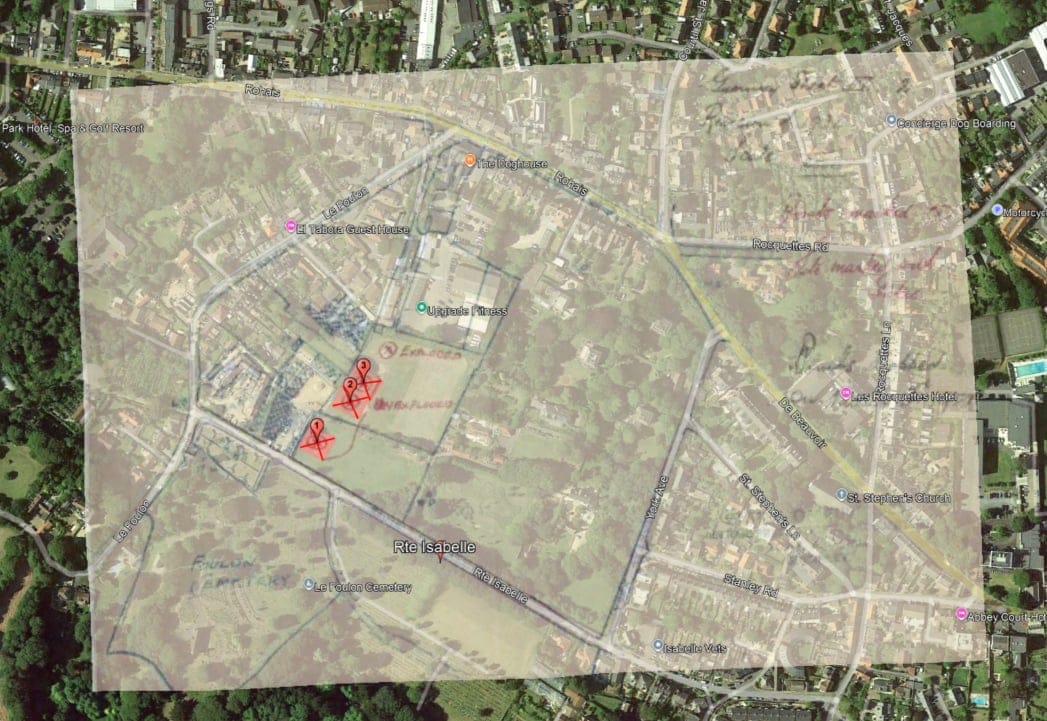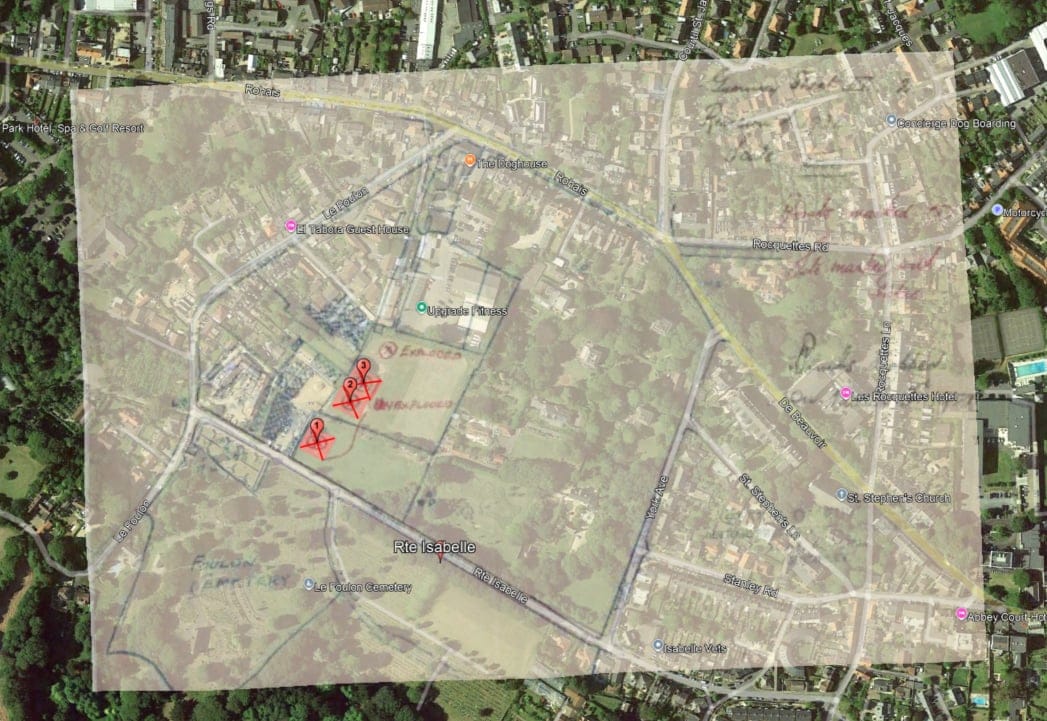Route Isabelle bombs update confirms delay and ongoing assessment of what action is needed

- Home Affairs continues to investigate what to do about four suspected unexploded ordnance on Route Isabelle.
- A memorandum of understanding has now been signed with Defence Science and Technical Laboratory to review survey of the land which showed four abnormalities.
- Assessment results are expected within four to six weeks.
- Committee President Marc Leadbeater emphasises public safety and cost-effectiveness.
Home Affairs has said that its efforts to investigate unexploded ordnance buried on Route Isabelle are ongoing.
This comes amid criticism about the speed of progress since serious concerns were raised about how the authorities were dealing with information that four bombs dropped during the Second World War remained buried underground in a field near houses.
A memorandum of understanding has been executed with the Defence Science and Technical Laboratory (DSTL), a scientific branch of the military known for its expertise in ordnance assessment.
The agreement will allow a detailed evaluation of survey results collected over the summer months.

While Home Affairs acknowledged there was a delay in starting the required assessment, it has commenced and is anticipated to be completed within four to six weeks.
The committee considered using a private company to speed up the process, but decided that the associated costs could not be justified for making things a few weeks quicker.
The summer survey identified four magnetic anomalies buried at a depth of approximately eight metres.
Home Affairs had been provided with documentary evidence that there could be unexploded ordnance from the Second World War and faced criticism for an early survey that would not have penetrated the ground deep enough to find any bombs.
Following the completion of the assessment in the summer and subsequent findings, senior officials will convene with the island's military liaisons to review the results and discuss potential next steps.
Deputy Marc Leadbeater, President of the Committee for Home Affairs, said: "Public safety is of course a priority for the Committee, and that is why we have continued to ensure this work progresses; however, we have also ensured this is being done in a proportionate and cost-effective way.
"We did consider using a private contractor, but that would have cost the taxpayer a five-figure sum and only brought the work forward by a few weeks at most, so the cost could not be justified."
He highlighted the advantages of collaborating with DSTL, noting their expertise would be beneficial in the upcoming analysis.
Dave Le Ray, Director of Operations at Justice & Regulation, said: “As part of the ongoing work, officers have done their best to ensure residents living in close proximity of the field are being kept up to date, including updates on the engagement with DSTL and what the next steps were.”*
He added that discussions with the military are expected to take place by December to ensure that a comprehensive approach is taken during the assessment process.
Bomb expert Ben Remfrey has been campaigning for action to be taken.
Last week he posted his latest concerns on Facebook.
“We seem to have ground to a halt on any progress in dealing with the ADW in the fields north of Route Isabelle, in St Peter Port Guernsey.
“A CPT intrusive survey was conducted in June of this year and large ferrous objects were located in or close to the reported location of where these bombs landed and penetrated the ground on the 3rd March 1941.
“We have had an election since the conclusion of the survey and the States Emergency Planning Team, part of the Home Affairs of the SOG (as a next step...) agreed to engage the Defence Science & Technology Laboratory (DSTL) in the UK to conduct a 'Risk Assessment' to evaluate 'if' these ADW posed a threat to the general public and the residents of the area.
“Where we appear to be now... Various excuses from the Emergency Planning team, delays in engaging DSTL and the summer - and the conclusion of an agreement with DSTL means we have '0' progress in the last 4-months.
“Clearly the new Home Affairs Committee and its President have bigger fish to fry, maybe they do, maybe they don't. But the fact remains - the situation with regard to the ADW in the Route Isabelle area remains - and the civil servants don't see the situation as a priority either.”
Deputy Leadbeater responded that there had been “zero excuses from Emergency Planning. The Emergency Planning Officer advised you via email on October 1st of the reason for the delay in signing the MoU.”





Comments ()